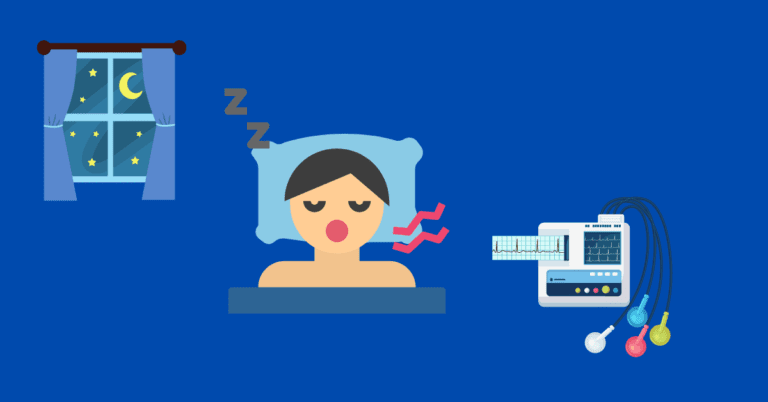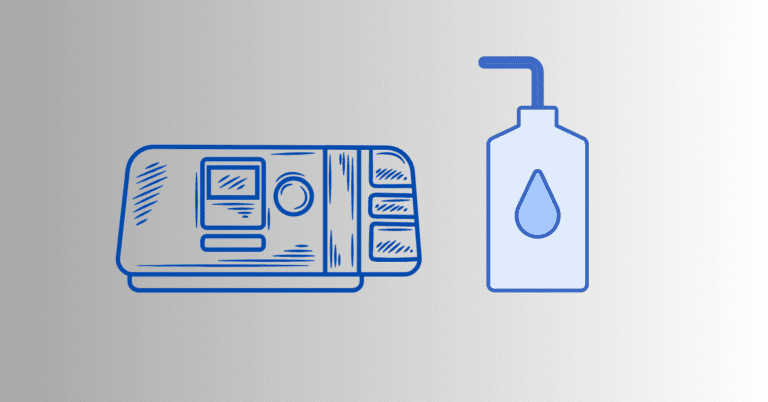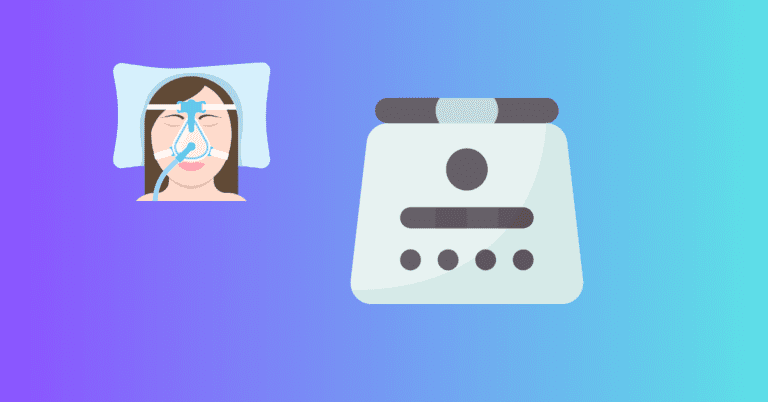Paroxysmal Nocturnal Dyspnea: What is this condition?
As someone who has severe sleep apnea, and runs a blog to help others, I’m always researching new information on the condition.
In this article, I’m talking about Paroxysmal Nocturnal Dyspnea
In this article, I will explore what paroxysmal nocturnal dyspnea is, why it happens, its connection to heart and lung conditions, and the treatment options available.
What Is Paroxysmal Nocturnal Dyspnea (PND)?
Paroxysmal nocturnal dyspnea refers to sudden episodes of severe shortness of breath that occur at night, usually awakening the person from sleep.

These episodes often come on without warning, causing a feeling of suffocation or extreme difficulty in breathing.
The term “paroxysmal” refers to the sudden onset, “nocturnal” indicates it occurs at night, and “dyspnea” means difficulty breathing.
Individuals experiencing PND often wake up feeling the need to sit or stand up to catch their breath. These episodes can last several minutes to hours, and it may take time for the
Causes of Paroxysmal Nocturnal Dyspnea
PND is most commonly associated with congestive heart failure (CHF). However, it can also be linked to other conditions, such as lung disorders, sleep apnea, or severe anxiety. Here’s a look at the most common causes of PND:
1. Congestive Heart Failure
In heart failure, the heart cannot pump blood efficiently, causing fluid buildup in the lungs (pulmonary edema).
When lying down, this fluid redistributes, increasing the pressure in the lungs and making it harder to breathe. This is why PND typically occurs while sleeping, as the body is horizontal, allowing fluid to pool in the lungs.
2. Sleep Apnea
People with sleep apnea often experience disrupted breathing during sleep. While obstructive sleep apnea involves airway blockages, central sleep apnea is characterized by the brain’s failure to signal the muscles to breathe.
Both types can contribute to nighttime breathing difficulties and may cause symptoms similar to PND.
3. Pulmonary Conditions
Conditions like chronic obstructive pulmonary disease (COPD), asthma, or other lung-related issues can lead to breathing difficulties, especially at night.
As with heart failure, the position of lying down can exacerbate symptoms by increasing pressure on the lungs.
4. Anxiety or Panic Attacks
In some cases, PND may be caused by an anxiety disorder or panic attack. Severe anxiety or panic can trigger hyperventilation, leading to a sensation of breathlessness, especially at night.
Symptoms of Paroxysmal Nocturnal Dyspnea
The main symptom of PND is waking up suddenly with difficulty breathing, but there are additional symptoms that may accompany this condition:
- Shortness of breath that begins abruptly during sleep.
- Coughing or wheezing is often triggered by fluid buildup in the lungs.
- Rapid breathing or a sensation of suffocation.
- The need to sit up or stand to breathe more easily.
- Chest tightness or discomfort, which may indicate an underlying heart condition.
- A feeling of anxiety or panic due to difficulty breathing.
People experiencing PND may find temporary relief by propping themselves up with pillows or sitting upright. However, the episode can still last several minutes or longer, depending on its cause.
Diagnosing Paroxysmal Nocturnal Dyspnea
If you experience PND, it’s important to seek medical attention, as it could be a sign of a serious condition like heart failure or a respiratory disorder. Your doctor will take a thorough medical history and perform several tests to determine the underlying cause of your symptoms.
Diagnostic Tests for PND:
- Echocardiogram or ECG: To assess heart function and detect any signs of heart failure.
- Chest X-ray or CT scan: To look for signs of fluid buildup in the lungs or other lung abnormalities.
- Pulmonary function tests (PFTs): To evaluate lung capacity and function.
- Sleep study (polysomnography): If sleep apnea is suspected, a sleep study may be conducted to observe breathing patterns during sleep.
- Blood tests: To check for heart-related biomarkers or other indicators of pulmonary issues.
Treatment for Paroxysmal Nocturnal Dyspnea
The treatment for PND depends on the underlying cause. Managing the root condition, whether it’s heart failure, lung disease, or sleep apnea, is the key to relieving symptoms.
1. Heart Failure Treatment
If PND is caused by congestive heart failure, treatment focuses on improving heart function and reducing fluid buildup in the lungs. Common treatments include:
- Diuretics: Medications that help remove excess fluid from the body, reducing the strain on the lungs and heart.
- ACE inhibitors or beta-blockers: To improve heart function and lower blood pressure.
- Lifestyle changes: Including a low-sodium diet, regular exercise, and weight management to ease the burden on the heart.
2. Treatment for Sleep Apnea
For sleep apnea-related PND, a CPAP machine or other therapies may be recommended to keep the airway open during sleep. Positional therapy or oral appliances may also help reduce apneas.
3. Pulmonary Treatments
If the cause of PND is related to a lung condition, treatments such as bronchodilators, corticosteroids, or oxygen therapy may be necessary. Managing underlying lung diseases like asthma or COPD can help improve breathing at night.
4. Anxiety or Panic Disorder Management
If anxiety or panic attacks are contributing to PND, therapy, counseling, or medications such as anti-anxiety medications or antidepressants may be recommended.
Preventing Paroxysmal Nocturnal Dyspnea
While treatment for the underlying condition is critical, there are several ways to help reduce the frequency and severity of PND episodes:
- Elevate your head while sleeping: Sleeping with your head propped up on pillows can help reduce fluid buildup in the lungs and relieve pressure on the airway.
- Avoid eating large meals before bed: Large meals can increase pressure on the diaphragm and worsen breathing difficulties.
- Manage your fluid intake: If you have heart failure, your doctor may recommend limiting fluid intake to reduce fluid retention.
- Follow your treatment plan: Whether you’re managing heart failure, sleep apnea, or lung disease, staying consistent with medications, treatments, and lifestyle changes is key to preventing PND.
Conclusion
Paroxysmal nocturnal dyspnea can be a frightening experience, but it’s often a symptom of an underlying condition that can be managed with proper treatment.
If you regularly wake up gasping for breath, seeking medical advice is essential to determine the cause. A proper diagnosis and treatment plan can reduce PND episodes and improve your quality of life.
Thanks for reading my article about Paroxysmal nocturnal dyspnea and please always seek medical advice if you think you have this condition.





